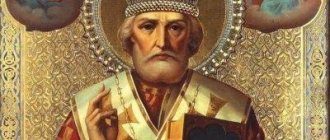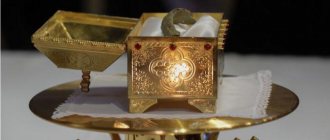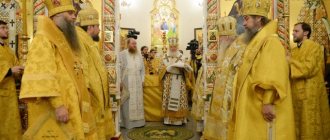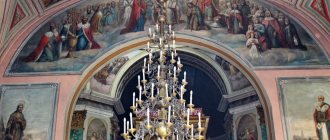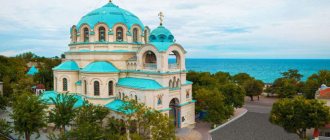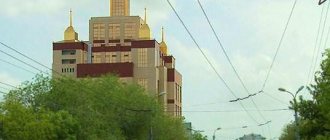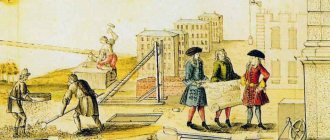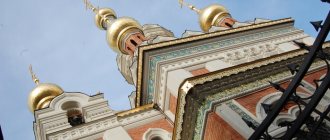Mir
Russia Ivanovo region Nikolskoye village Church of St. Nicholas (Nikolskoye) Map is loading...
{"format":"leaflet","minzoom":false,"maxzoom":false,"limit":50,"offset":0,"link":"all","sort":[""], "order":[],"headers":"show","mainlabel":"","intro":"","outro":"","searchlabel":"\u2026 \u0441\u043b\u0435\ u0434\u0443\u044e\u0449\u0438\u0435 \u0440\u0435\u0437\u0443\u043b\u044c\u0442\u0430\u0442\u044b","default":"","import-annotation":false,"width ":"auto","height":"350px","centre":{"text":"","title":"""link":"""lat":57.0970420000000018490027287043631076812744140625,"lon": 41.1568809999999984938767738640308380126953125,"icon":""},"title":"","label":"","icon":"","lines":[],"polygons":[],"circles":[ ],"rectangles":[],"copycoords":false,"static":false,"zoom":8,"defzoom":14,"layers":["OpenStreetMap"],"image layers":[] ,"overlays":[],"resizable":false,"fullscreen":true,"scrollwheelzoom":true,"cluster":false,"clustermaxzoom":9,"clusterzoomonclick":true,"clustermaxradius":80, "clusterspiderfy":true,"geojson":"","clicktarget":"","showtitle":true,"hidenamespace":false,"template":"","userparam":"","activeicon": "","pagelabel":false,"ajaxcoordproperty":"","ajaxquery":"","locations":[{"text":"\u003Cb\u003E\u003Ca href=\"/palomnik/%D0% A5%D1%80%D0%B0%D0%BC_%D1%81%D0%B2%D1%8F%D1%82%D0%B8%D1%82%D0%B5%D0%BB%D1%8F_% D0%9D%D0%B8%D0%BA%D0%BE%D0%BB%D0%B0%D1%8F_(%D0%9D%D0%B8%D0%BA%D0%BE%D0%BB%D1 %8C%D1%81%D0%BA%D0%BE%D0%B5)\» title=\»\u0425\u0440\u0430\u043c \u0441\u0432\u044f\u0442\u0438\u0442\u0435\u043b\ u044f \u041d\u0438\u043a\u043e\u043b\u0430\u044f (\u041d\u0438\u043a\u043e\u043b\u044c\u0441\u043a\u043e\u0435)\»\u003E\u0425 \u0440\u0430\u043c\ u0441\u0432\u044f\u0442\u0438\u0442\u0435\u043b\u044f \u041d\u0438\u043a\u043e\u043b\u0430\u044f (\u041d\u0438\u043a\u043e\u0 43b\u044c\u0441\u043a\u043e \u0435)\u003C/a\u003E\u003C/b\u003E\u003Chr /\u003E\u003Ca href=\»/palomnik/%D0%A1%D0%B2%D0%BE%D0%B9%D1%81% D1%82%D0%B2%D0%BE:%D0%90%D0%BD%D0%BD%D0%BE%D1%82%D0%B0%D1%86%D0%B8%D1%8F\" title=\»\u0421\u0432\u043e\u0439\u0441\u0442\u0432\u043e:\u0410\u043d\u043d\u043e\u0442\u0430\u0446\u0438\u044f\»\u003E\u0410\u0 43d\u043d\ u043e\u0442\u0430\u0446\u0438\u044f\u003C/a\u003E: »'\u0425\u0440\u0430\u043c \u0441\u0432\u044f\u0442\u0438\u0442\u0435\u04 3b\u044f\u041d\u0438 "" 42\u0449\u0430\u043d\u0438\ u0435\u043c \u043f\u043e\u043c\u0435\u0449\u0438\u043a\u0430 \u0412\u043b\u0430\u0434\u0438\u043c\u0438\u0440\u0430 \u0410\u 043d\u0434\u0440\u0435\u0435\ u0432\u0438\u0447\u0430 \u041c\u043e\u043b\u0447\u0430\u043d\u043e\u0432\u0430 \u0441 \u043f\u0440\u0438\u0445\u043e\u0436\u 0430\u043d\u0430\u043c\u0438. \u0421\u0432\u044f\u0442\u044b\u043d\u044f \u0445\u0440\u0430\u043c\u0430 - \u043a\u043e\u0432\u0447\u0435\u0433 \u0441 \u04 47\u0430\u0441\u0442\u0438\ u0447\u043a\u043e\u0439 \u043c\u043e\u0449\u0435\u0439 \u0441\u0432\u044f\u0442\u0438\u0442\u0435\u043b\u044f \u041d\u0438\u 043a\u043e\u043b\u0430\u044f\ u0427\u0443\u0434\u043e\u0442\u0432\u043e\u0440\u0446\u0430.","title":"\u0425\u0440\u0430\u043c \u0441\u0432\u044f\u0442\u0438\u0 442\u0435\ u043b\u044f \u041d\u0438\u043a\u043e\u043b\u0430\u044f (\u041d\u0438\u043a\u043e\u043b\u044c\u0441\u043a\u043e\u0435)","link":""" lat ": 57.0970420000000018490027287043631076812744140625," LON ": 41.15688099999999984938738640308380126953125," ICON ":"}], "IMAGELAYERS": []}}}}}}}}}
57.097042; 41.156881
Russia, Ivanovo district, Bogorodskoye rural settlement, Nikolskoye village
Nikolskoye village, Ivanovo region
Russia
Telephone:
8(906) 6190626
Church of St. Nicholas
built in 1854 by the diligence of landowner Vladimir Andreevich Molchanov and his parishioners. The shrine of the temple is an ark with a piece of the relics of St. Nicholas the Wonderworker.
History[edit]
The church was built in 1854 with the care of the landowner Vladimir Andreevich Molchanov and his parishioners.
For the construction of the stone temple of V.A. Molchanov began no earlier than 1845. No documents on the construction of the St. Nicholas Church have been preserved: the consistory archive burned twice: once at the end of 1880, when most of the sources were destroyed, the second, no less devastating - in 1982, which aggravated the consequences of the previous one.
From the church records of the 1880s and later we see that the church was built with three altars: in the name of St. Nicholas the Wonderworker (main, cold), in honor of the icon of the Vladimir Mother of God (warm, on the right side) and the Intercession of the Most Holy Theotokos (on the left side ). According to the staff, as in the wooden one, there was a priest and a psalm-reader, who were entitled to a state salary. In addition to this, a certain amount came from bank notes placed by the clergy in the Ivanovo Public Bank and modest assistance from church needs.
In the church life of each parish, a special place was given to the elder. In this sense, St. Nicholas parish was perhaps more fortunate than others. We mean the Ivanovo-Voznesensk merchant Grigory Kuznetsov, a tireless and caring guardian of the St. Nicholas Church, who was the headman at the end of the 19th century. He completed and supplemented the work begun by V.A. Molchanov.
In 1886, he submitted a memorandum to the bishop “about his acquisition of various things for the church” and a petition for the improvement of the temple, which, in particular, said: “St. Nicholas Church was built in 1854. When constructing it, it was assumed that there would be two Altars in the warm temple, on the right and left sides of the passage to the cold temple. Due to lack of funds, at one time, only one Altar was built, on the right side. Driven by zeal for the temple of God and wishing to perpetuate the memory of the peacemaker Tsar Alexander the 3rd, I express my readiness, at my own expense and with well-donors, to build an altar (and iconostasis) on the left side of the warm church in honor of the Intercession of the Mother of God, in addition to this, I wish to replace the collapsed stove build a new tiled stove” and “remove the old bell of 50 poods from the bell tower”, “how it rang out and was of poor quality...”. The old bell was supposed to be sold to the factory, and the money received for it would be used to build a new house for the Nikolaev parochial school. Let us add that at the time of submitting the petition, the merchant had already purchased a new church bell weighing 101 poods 5 pounds, and the “installation of a school house”, carried out on the land of Nikolsky peasants, was in full swing.
Vasily Grigorievich built the school “on the occasion of the three-hundredth anniversary of the birth of Tsar Mikhail Fedorovich, the founder of the safely reigning House of Romanov” and in advance asked permission from the bishop to build it “to place in the premises an Icon in the name of the Feodorovskaya Mother of God and two portraits of Tsar Mikhail Fedorovich and now safely reigning Emperor Nicholas 2" (07/12/1896).
The local rector, the dean of the district, and after him the diocesan authorities did not allow the bell to be sold, which caused offense and put the merchant A.G. at even greater expense. Kuznetsova. However, after the misunderstandings were resolved, a new iconostasis and a new school were made. According to the certificate of inspection of the work performed: “The chapel was built on the left side of the warm church, a new iconostasis was built for it, made of pine, decorated in places with carvings, three-tiered, with carved royal doors. The throne is built with a height of 1 arshin..., length and width of 1 arshin 6 vershoks; altar... height 1 arshin 4 vershoks length and width. The stove is made of white brick, round, covered with sheet iron. The building for the school was built on peasant land, 35 sazhens from the church, wooden, 13 arshins ... 9 arshins wide, 5 arshins high, covered with planks ... no; The height of the room is 4 arshins, on the left side there is a room for teachers fenced off with planks, a Russian stove with a flood chamber - from the classroom is lined with tiles, there are 10 windows in the house - all have two frames, one door is carpentry. All work is done properly and from good quality materials.”
The examination was carried out in November 1897 and, presumably, around the same time the new boundary was consecrated, and the school house was filled with the voices of young parishioners of the Nikolskoye, on Molokhta, church, which stood in the village of Nikulskoye, Nerekhta district, then Kostroma province.
Temple before restoration
The archival fund of the Authorized Council for the Affairs of the Russian Orthodox Church received information that the Nikolsky village council petitioned the Ivanovo-Voznesensk city council to close the church and transfer the building to the local collective farm for storage. At a meeting of the commission for consideration of religious issues at the regional executive committee of the Ivanovo industrial region on April 15, 1932 (minutes No. 5) on the issue of closing churches in the villages of Sidorovskoye and Nikolskoye, Ivanovo region, it was decided: “Taking into account,
1. that believers refused to use these churches,
2. that Article 35 of the resolution “On religious associations has been implemented,
3. that the collective farms of these villages need premises for storing agricultural products, for which these can be used - the agreements should be terminated and the churches, as prayer buildings, liquidated and transferred to the collective farms for granaries" (F.R-2953. Op.Z.D .83.L.8,15-16 ob., 43
Around 1960, a fire occurred, which left the temple building in a deplorable state. Also, around the 60s, the bell tower was destroyed by the local chairman.
In 2006, the Temple was transferred to the Russian Orthodox Church of the Moscow Patriarchate and parish life began to be revived in it.
For several years the prayer to the Lord God and St. Nicholas the Wonderworker did not stop for sending helpers to restore the shrine.
Through prayers, the restoration of the Temple began in 2010.
The following restoration work was carried out using funds from ordinary donors:
- new domes were manufactured and delivered - 2010
— new windows and oak doors were installed in the cold part of the Temple — 2011.
— the emergency foundation was repaired, as well as a new roof was built over the altar part of the temple, new windows were installed in the altar — 2012.
Today, funds are being raised to restore the damaged roof and dome of the Temple.
History of the temple
The church in the name of St. Nicholas the Wonderworker is located in the village of Nikolskoye, located 4 km north of the town of Kubinka, Odintsovo district, Moscow region. Initially, as chronicles of the 14th century testify, the village was called Klyapovo. Then, after the construction of the temple, the village began to be called Nikolsky-Klyapovo. In government records dating back to 1852, the settlement is simply called Nikolsky.
The first mention of St. Nicholas Church is found in the spiritual message of Prince Ivan the Red, who bequeathed Moscow possessions to his wife Alexandra in 1385. In 1586, Tsar Fyodor Ioannovich transferred Klyapovo to the Trinity-Sergius Monastery. The monks describe the parish church as a four-walled wooden frame.
The books of the monastery record that the temple is provided with holy images, candles and lamps, and liturgical books. Various bells hang in the belfry. Priest Karp, deacon and sexton lived on the territory of the church. There was also a hospice house for the poor here.
Historical fate
In 1764, Catherine II carried out a secularization reform in the Russian Empire. Part of the monastic property came under state control. Nikolskoye became a secular village. In 1805, a stone building was erected on the site of the wooden church. The State Property Register of 1852 mentions the brick church of St. Nicholas.
In 1933, by order of the Bolshevik leaders, the bells were removed from the bell tower. Three years later the temple itself is closed. Some church utensils and precious icons are confiscated. The remaining property is stolen. During the war, the premises are used by cavalry units as a stable. Then a grain storage facility is installed here.
Until the 90s of the last century, the building was empty. Without doors, with broken windows, the abandoned church gradually collapsed. The plaster on the walls was crumbling, and the marble slab floor was stolen by local residents for household needs.
Current situation
In 1999, restoration of the temple began. At the origins of the revival stood Archpriest Georgy (Studenov) and a native of Nikolskoye, M.V. Vanin. The first services were held surrounded by scaffolding. Father George turned to His Holiness the Patriarch with a request to change the status of the church. By order of Alexy II, the former parish church was included in the Moscow diocese as a patriarchal metochion.
December 28, 2003 is a significant date in the life of St. Nicholas Church. On this day, after the Divine Liturgy, which was celebrated by Bishop Feognost of Sergiev Posad, the bishop's consecration of the renovated church took place. Patriarch Alexy II was present at the ceremony and gave the church an icon of the Kazan Mother of God with a dedicatory inscription on the icon case.
Since January 10, 2013, Father Kirill (Osharov) has served as rector of the Church of St. Nicholas of Myra.
How to get there[edit]
Address:
153507 Ivanovo region, Ivanovsky district, Nikolskoye village, Kalachevo village
Telephone:
8(906) 6190626
Directions:
- By train
Get to Krasnoselskaya station (this is about 30 minutes from the city of Ivanovo), then walk along the railway track forward in the direction of the train until the crossing, turn left and go straight to the village of Nikolskoye. The distance from the station to the village is approximately 4 km.
- By personal transport
You can drive from the city of Ivanovo in two ways: from the side of the village. Bogorodskoye and from the village of Yasyunikha.
From the side with. Bogorodskoye You will pass: the village of Byakovo, the village of Yurikovo and the village of Novino and right next to the village. Nikolskoye.
From the side of the village of Yasyunikha you will pass: the village of Malinki, the village of Yurkino, the village. Kotsyno, Izmailovo village and village. Yuryevskoe. Afterwards there will be a crossing of the railway track and straight to the next village. Nikolskoye
Architecture and decoration of the building
The Church of St. Nicholas the Wonderworker in Nikolskoye was built at the expense of the Moscow merchant T. Petrov. Donations from parishioners were used to furnish and decorate the premises. The face of the Savior was painted on the dome. A stove was installed in the basement of the building, which warmed the floor in winter. A two-story house was erected next to the church, housing an almshouse and a parish school. The church yard was surrounded by a wrought-iron fence on massive stone pillars.
Appearance
The building, built at the beginning of the 19th century, complies with the rules of the classical style. The one-story building is covered with a hip roof, topped with a single dome on a drum. A four-tiered bell tower rises above the porch. The main altar is consecrated in the name of God's saint Nicholas of Myra.
In 1904, the premises were expanded according to the plan of the architect N. N. Blagoveshchensky. The size of the refectory has increased. On the left and right, chapels were built in the name of St. Sergius of Radonezh and the biblical prophet Elijah. The interior walls of each chapel are covered with paintings depicting scenes from the lives of the holy righteous.
Eight bells of varying sizes and weights were suspended on the two upper floors of the belfry. Each bell had its own name. According to ancient custom, on Bright Week, any parishioner could climb the bell tower and become a bell ringer for a while.
The largest bells of St. Nicholas Church:
- “Big” - 5176.08 kg;
- “Parental” - 1801.8 kg;
- “Firefighter” - 655.2 kg.
Temple shrines
In every Russian church, relics that are worshiped by Orthodox parishioners and pilgrims are preserved and protected. The Church of the Pleasant of God in Nikolskoye is no exception. There are two monuments in the churchyard. A memorial cross was installed at the site of the reburial of the remains discovered during the restoration of the temple. In the summer of 2013, a granite slab with the names of the spiritual mentors who served in the church was installed and consecrated.
Revered shrines in the Church of St. Nicholas:
- Icon of the Bishop of Myra, found in the 16th century.
- The image of the Mother of God "Andronikovskaya".
- "Smolensk" icon of the Virgin Mary and Child.
- Locally revered icon of the holy martyr Alexander (Tsitserov).
The image of St. Nicholas the Pleasant is decorated with rings, crosses and beads. These are the gifts of parishioners who received help from the Saint. The icons of the Mother of God were preserved in the church until its closure during the era of Bolshevik persecution. Pious villagers managed to protect the relics from desecration. With the revival of Orthodox traditions, divine images returned to the temple.
The last rector before the closure of the church by the communists was Father Alexander (Tsitserov). By the resolution of the Holy Synod of July 16, 2005, the priest was canonized as Russian confessors and new martyrs. On September 9, 2012, on the day of remembrance of the saint, the icon of Father Alexander, on which his pectoral cross is attached, was installed in the church.
